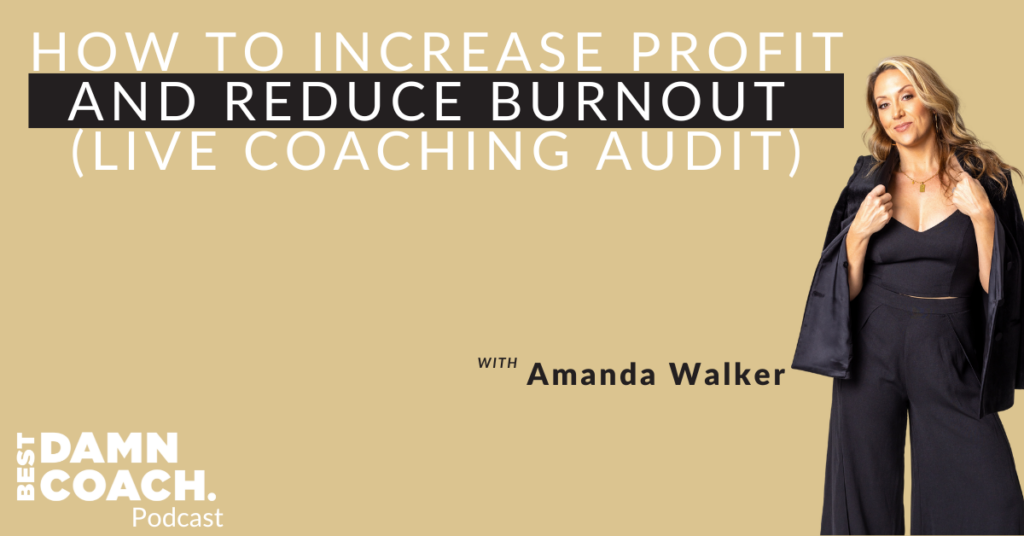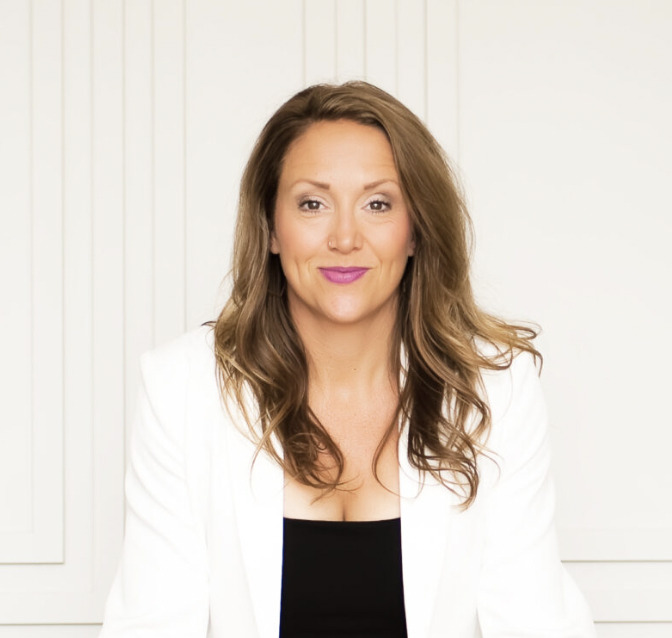{Live Coaching Audit} How To Increase Profit and Reduce Burnout
I’m thrilled to share with you an episode that’s going to revolutionize the way you think about your coaching business.
In this live coaching session, I had the pleasure of sitting down with Wendy, a dedicated parent coach who’s facing a challenge that many of us can relate to: how to increase profitability without compromising the mission to help as many people as possible.
The Membership Dilemma: Balancing Access and Profitability
Wendy’s situation is one that many coaches find themselves in. She’s running a low-cost membership program priced at $59 per month, designed to reach a wide audience of parents who need support. It’s a noble goal, but here’s the catch – the high-touch nature of the service is causing strain and potential burnout. Sound familiar?
We dove deep into the structure of Wendy’s membership, examining the pros and cons of her current model. While it’s great for accessibility, it’s not so great for Wendy’s bottom line or her energy levels. This is a common trap that many coaches fall into – the desire to help everyone can sometimes lead to undervaluing our own expertise and time.
Rethinking the Pricing Strategy: The Power of Tiers
One of the key strategies we explored was the idea of introducing tiered pricing to the membership. This isn’t about simply raising prices across the board. Instead, it’s about creating different levels of access that cater to varying needs and budgets of clients.
For instance, we discussed the possibility of a basic tier that provides access to course content only, and a premium tier that includes live coaching sessions. This approach allows coaches to maintain accessibility while also creating a pathway for clients who want (and are willing to pay for) more intensive support.
The beauty of this model is that it allows you to serve a broader audience while still having a more profitable option for those who want deeper engagement. It’s a win-win situation that balances impact with income.
Simplification, Less Can Be More To Avoid Burnout
In our conversation, we touched on a crucial point that many coaches overlook – the power of simplification. Instead of constantly creating new offers, we focused on how Wendy could optimize her existing ones. This approach can lead to increased profitability without the added complexity of managing multiple programs.
Think about it – when you’re juggling too many offers, you’re spreading yourself thin. You’re not able to give your best to any single program. By focusing on one or two core offerings and making them exceptional, you can actually increase your impact and your income.
Serving the Masses vs. Sustainable Business
One of the most profound moments in our discussion was addressing the cognitive dissonance that many coaches experience. There’s often a tension between the desire to serve the masses and the need for sustainable business practices. Wendy expressed this beautifully when she talked about her dream of having thousands of members in her low-cost program, but also recognizing the strain that would put on her current high-touch model.
The solution? Leveraging free content (like podcasts and social media) to reach a wide audience while reserving high-touch services for higher-priced offers. This strategy allows you to maintain your mission of helping as many people as possible while also creating a sustainable, profitable business model.
The Crucial Role of Onboarding
We also touched on an often-overlooked aspect of membership programs – the importance of effective onboarding. Creating immediate wins for new members can significantly increase retention rates. This is crucial for the long-term success of any membership model.
I shared insights from retention expert Robert Skrob, emphasizing the need to create that immediate ROI for members, especially in low-ticket offers. When members see value right from the start, they’re much more likely to stick around and potentially upgrade to higher-tier offerings.
Scaling with Intention: Designing for Growth
One of the key lessons from our session was the importance of designing your business model with scalability in mind. This means creating systems and structures that can handle growth without proportionally increasing your workload.
I shared my own experience of not thinking about scalability early on in my business. Now, my business is structured in a way that we could take on thousands of new clients without significantly changing the demands on me personally. This is the kind of intentional design that can lead to sustainable growth and profitability.
Testing and Iteration: The Key to Finding Your Sweet Spot
Throughout our discussion, we emphasized the importance of continuous testing and gathering feedback from your audience. The key to finding the right balance between impact and profitability is being willing to experiment, analyze results, and make adjustments.
This might mean trying out different pricing tiers, tweaking your onboarding process, or even completely overhauling your offer structure.
The willingness to iterate and evolve is what separates successful, sustainable coaching businesses from those that struggle to grow.
Reimagine Your Coaching Business
If you’re feeling stuck in your current business model, or if you’re just starting out and want to build a sustainable, profitable coaching practice from the get-go, it’s time to take action. Here are a few steps you can take:
- Audit your current offerings. Are they truly serving both you and your clients?
- Consider introducing tiered pricing if you haven’t already.
- Focus on simplifying and optimizing your core offerings rather than constantly creating new ones.
- Invest time in creating an effective onboarding process for new clients or members.
- Think about how you can leverage free content to reach the masses while reserving high-touch services for premium offerings.
- Always design with scalability in mind. How would your business handle 10x the clients?
Remember, your coaching business should serve both your clients and your own well-being. By focusing on profitability and sustainability, you’ll be better equipped to make a lasting impact on the lives of those you serve.
Ready to take your coaching business to the next level? Don’t miss our upcoming live signature framework building series starting October 7th. Visit amanda-walker.com/live to sign up and join our community of best damn coaches!



